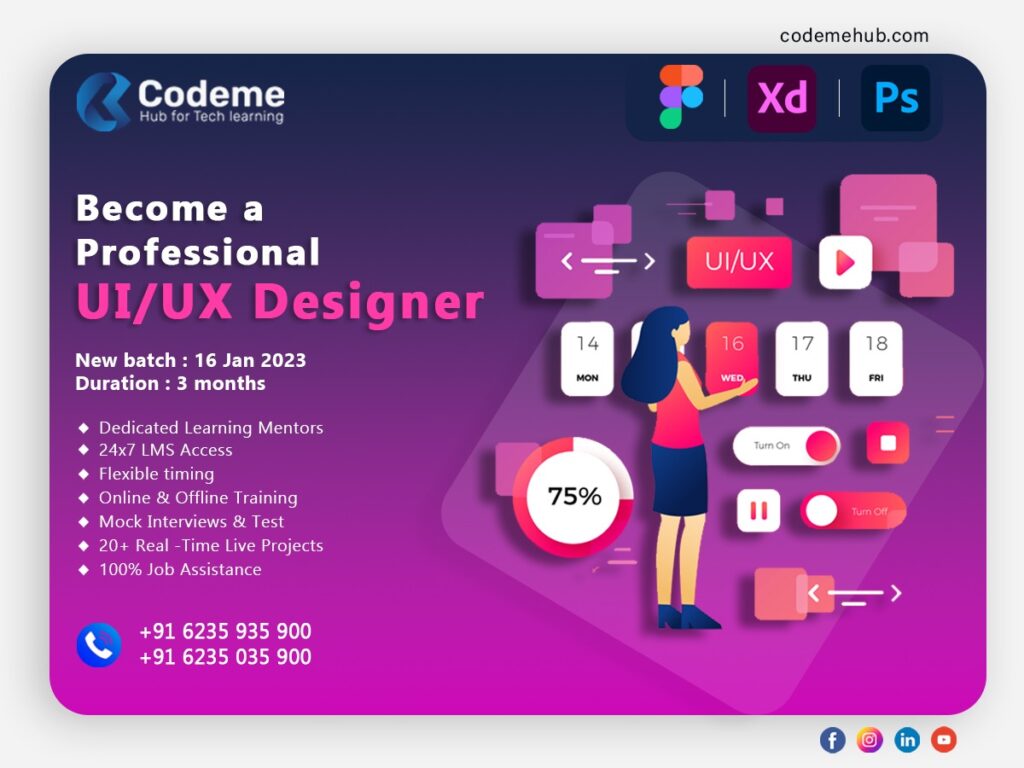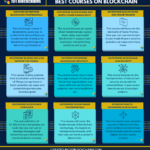My Journey from Confused Beginner to Confident Creator: Why a UI UX Design Course Changed Everything
Do you ever feel a bit lost, wondering what your next step should be? That was me, not too long ago. I was stuck in a job that didn’t quite light me up, scrolling through endless articles about new career paths, and feeling a familiar knot in my stomach. I knew I wanted to create something, to solve problems, and to make things easier for people, but I had no idea how to turn that vague desire into a real skill.
Then, almost by accident, I stumbled upon "UI UX Design." At first, it sounded like complicated tech jargon. "User Interface? User Experience?" My brain immediately pictured complex coding and graphic design wizardry that felt way beyond my reach. But the more I read, the more intrigued I became. It wasn’t just about making things look pretty; it was about understanding people, their needs, and designing digital products – like websites and apps – that actually made sense and felt good to use.
That’s when a little spark ignited. Could this be it? Could this be the path I was looking for? The idea of learning a skill that combined creativity with problem-solving felt incredibly appealing. But where to begin? The internet was a vast ocean of information, and honestly, trying to teach myself felt like trying to drink from a firehose. That’s when I decided: I needed structure, guidance, and a clear roadmap. I needed a proper UI UX Design Course.
Taking the Leap: Why I Chose a UI UX Design Course
The decision wasn’t light. There are so many options out there – online courses, bootcamps, university programs. It felt a bit daunting, honestly. I spent weeks researching, reading reviews, comparing curricula, and trying to figure out what would be the best fit for someone like me, a complete newbie.
What I looked for in a UI UX course was pretty specific:
- Beginner-Friendly: This was non-negotiable. I needed something that started from square one, explaining concepts without assuming prior knowledge.
- Practical, Hands-on Learning: I learn by doing, so I wanted a course that had plenty of projects and exercises.
- Experienced Instructors: Someone who could not only teach but also share real-world insights.
- Portfolio Building Focus: I knew that to get a job, I’d need a strong portfolio, so the course had to help me create one.
- Community and Feedback: Learning alone can be tough. I hoped for a community where I could ask questions and get feedback on my work.
After much deliberation, I finally enrolled. And let me tell you, it was one of the best decisions I’ve ever made.
Diving Deep: What I Actually Learned in My UI UX Course
Stepping into that first module felt like opening a new book, full of possibilities. The instructors were amazing, breaking down complex ideas into understandable chunks. Here’s a glimpse into the incredible journey and the core skills I picked up:
1. The Power of Empathy: Understanding Your Users
Before I touched any design software, the course drilled one crucial idea into my head: User Research. This was a revelation! It wasn’t about my ideas; it was about understanding the people who would actually use the product.
We learned how to:
- Conduct User Interviews: Talking to real people to uncover their needs, frustrations, and goals.
- Create User Personas: Building fictional profiles of typical users, giving them names, backstories, and motivations. This made designing feel so much more personal.
- Map User Journeys: Visualizing the steps a user takes to achieve a goal, identifying pain points along the way.
This part of the UI/UX course taught me to put myself in someone else’s shoes, which is, honestly, a life skill beyond just design.
2. Building the Blueprint: Information Architecture & Wireframing
Once I understood the users, it was time to organize information logically. This is where Information Architecture (IA) came in. Think of it like creating a detailed blueprint for a house before you even think about paint colors.
I learned how to:
- Create Site Maps: Laying out the structure of a website or app, showing how different pages connect.
- Develop User Flows: Visualizing the paths users take through the product to complete specific tasks.
- Design Wireframes: These are rough, low-fidelity sketches or outlines of a page’s content and layout. No colors, no fancy fonts, just the bare bones to focus on functionality. This was my first real step into "designing," and it felt incredibly empowering to see my ideas take shape, even if they looked like simple boxes and lines.
3. Bringing It to Life: UI Design & Prototyping
This is where things started to get really exciting – the visual part! User Interface (UI) Design is all about making things look good and feel intuitive. It’s about how the user interacts with the product visually.
My UI UX Design Course covered:
- Visual Hierarchy: Learning how to guide a user’s eye using size, color, and placement.
- Typography: Choosing fonts that are readable, appealing, and convey the right message.
- Color Theory: Understanding how colors evoke emotions and create brand identity.
- Iconography & Imagery: Using visual elements effectively.
- Prototyping: This was a game-changer! Using tools like Figma or Adobe XD, I learned to turn my static wireframes into interactive prototypes. It felt like magic – suddenly, my designs weren’t just pictures; they were clickable, scrollable experiences that felt almost like a real app or website. This allowed me to test ideas quickly without needing to write a single line of code.
4. The Loop of Improvement: Usability Testing & Iteration
The course emphasized that design is never truly "finished." It’s an ongoing process of improvement. This is where Usability Testing became crucial.
I learned to:
- Conduct Usability Tests: Watching real users interact with my prototypes, observing where they got stuck or confused.
- Gather Feedback: Actively listening to what users had to say.
- Iterate and Refine: Taking that feedback and using it to improve my designs. It taught me to detach myself from my initial ideas and embrace criticism as a path to better solutions. This cycle of design, test, and refine is at the heart of good UI UX.
Beyond the Classroom: Building My Portfolio and Confidence
The biggest takeaway from my UI UX Design Course wasn’t just the knowledge; it was the practical experience and the portfolio I built. Each project in the course became a piece of my growing portfolio, showcasing my skills in user research, wireframing, UI design, and prototyping.
The instructors also offered invaluable advice on:
- Crafting a Compelling Portfolio: How to present my work in a way that tells a story and highlights my design process.
- Networking: Connecting with other designers and professionals in the field.
- Interview Skills: Preparing for job interviews and articulating my design choices.
Suddenly, that confused beginner who was lost in a sea of career options felt like a confident creator, ready to tackle real-world design challenges.
Is a UI UX Design Course Worth It for Beginners? Absolutely!
If you’re reading this and feeling that same spark I did, wondering if learning UI UX is for you, I wholeheartedly recommend finding a good UI UX Design Course. Here’s why:
- Structured Learning Path: It takes you from zero to a solid foundation without the overwhelm of trying to piece everything together yourself.
- Expert Guidance: Learning from experienced professionals is invaluable. They’ll teach you best practices, common pitfalls, and industry insights you won’t easily find in free tutorials.
- Hands-on Projects & Portfolio Building: This is crucial. You’ll gain practical experience and walk away with real projects to showcase your abilities.
- Community & Feedback: You’ll connect with fellow learners and get constructive criticism, which is essential for growth.
- Accountability: Having deadlines and a structured curriculum keeps you motivated and on track.
- Industry-Relevant Tools: You’ll learn to master the software and tools that designers use every day.
My Advice for Aspiring UI UX Designers
If you’re thinking about taking the plunge, here are a few tips from someone who’s been there:
- Do Your Research: Find a UI UX course that aligns with your learning style and goals. Look at their curriculum, instructor profiles, and alumni success stories.
- Be Curious and Ask Questions: Don’t be afraid to speak up when you don’t understand something. Your instructors are there to help.
- Practice, Practice, Practice: Design is a skill, and like any skill, it improves with consistent effort. Work on personal projects, even small ones.
- Embrace Feedback: It can be tough to hear criticism, but it’s the fastest way to grow. Learn to differentiate between constructive feedback and personal opinion.
- Build Your Network: Connect with your classmates, instructors, and other designers online. The design community is generally very supportive.
The Journey Continues
My journey into UI UX design started with a simple question and a leap of faith. That UI UX Design Course wasn’t just a series of lessons; it was a transformative experience that gave me the skills, the confidence, and the community I needed to pursue a fulfilling career.
If you’re yearning to create, to solve problems, and to make the digital world a better place for everyone, then perhaps a UI UX Design Course is your next big adventure too. It might just be the spark you’ve been waiting for.



